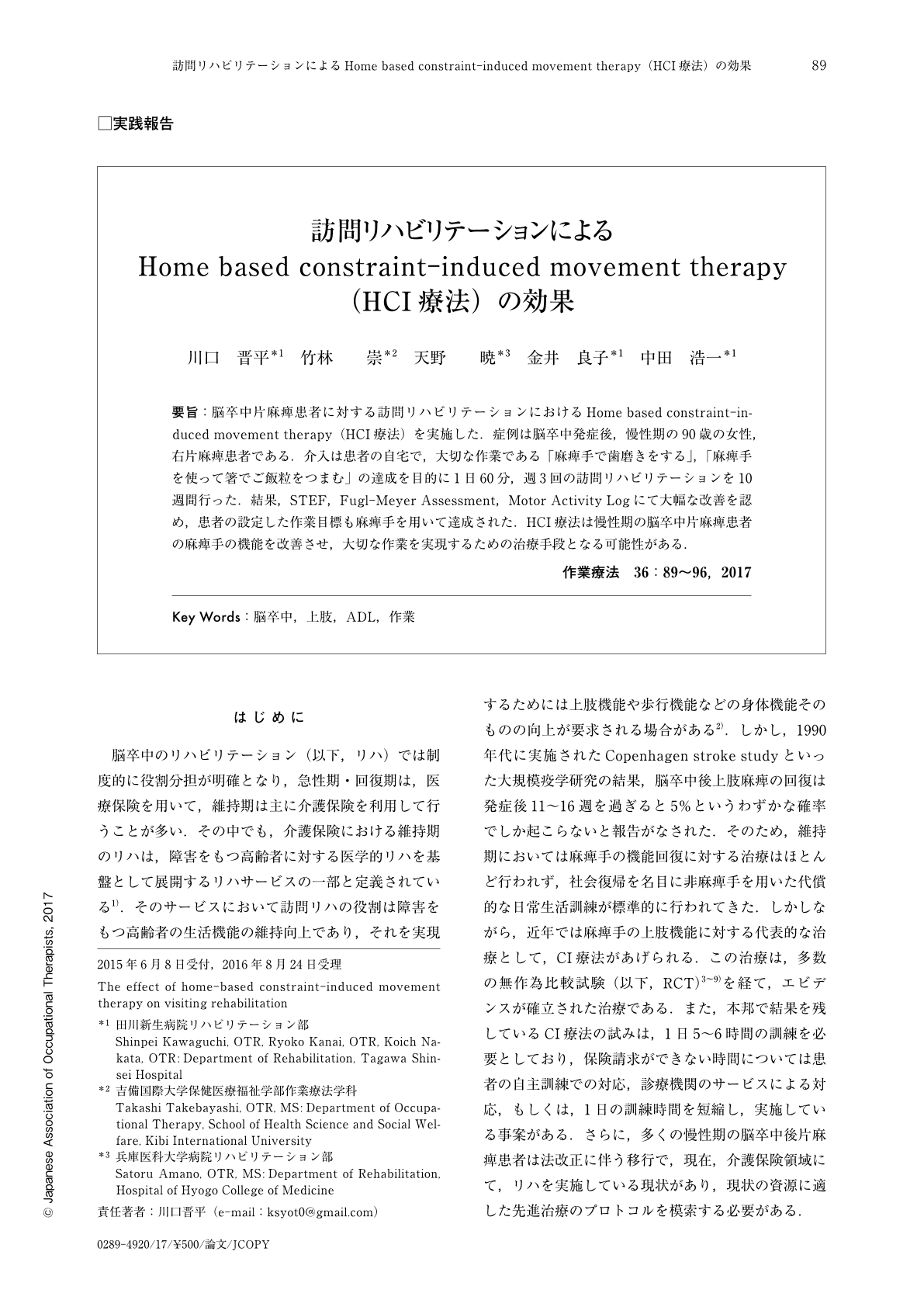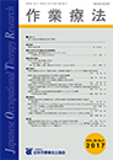Japanese
English
- 販売していません
- Abstract 文献概要
- 1ページ目 Look Inside
- 参考文献 Reference
- サイト内被引用 Cited by
要旨:脳卒中片麻痺患者に対する訪問リハビリテーションにおけるHome based constraint-induced movement therapy(HCI療法)を実施した.症例は脳卒中発症後,慢性期の90歳の女性,右片麻痺患者である.介入は患者の自宅で,大切な作業である「麻痺手で歯磨きをする」,「麻痺手を使って箸でご飯粒をつまむ」の達成を目的に1日60分,週3回の訪問リハビリテーションを10週間行った.結果,STEF,Fugl-Meyer Assessment,Motor Activity Logにて大幅な改善を認め,患者の設定した作業目標も麻痺手を用いて達成された.HCI療法は慢性期の脳卒中片麻痺患者の麻痺手の機能を改善させ,大切な作業を実現するための治療手段となる可能性がある.
The purpose of this case report was to work out the training protocols of home-based constraint-induced movement therapy (HCI therapy) for an individual with stroke-induced chronic upper-extremity hemiparesis. The patient was a 90-year-old woman who had a stroke 2 years previously and had right upper-extremity deficits. She completed a 10-week HCI program during which she restrained the unaffected upper extremity and participated in 60 minutes of intensive training of the affected upper extremity at home. Her meaningful occupational goals were brushing teeth and picking up a single grain of rice with chopsticks using the hemiparetic upper-extremity. As a result, increased scores were noted from pretreatment to post-treatment on the Fugl-Meyer Assessment for upper-extremity, Motor Activity Log, and Simple Test for Evaluating Hand Function. Additionally, all her meaningful occupation goals were accomplished, thus indicating the positive effects of HCI intervention in this pilot study.

Copyright © 2017, Japanese Association of Occupational Therapists. All rights reserved.


